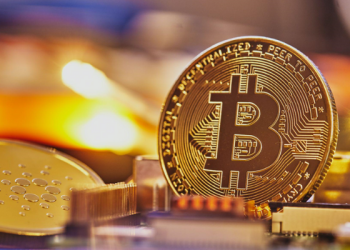Bitcoin, the leading cryptocurrency by market value, experienced a significant rally on Monday, reaching $27,220, its highest point since August 31. The surge comes as U.S. rates traders increasingly expect the Federal Reserve to maintain current borrowing costs in its upcoming decision this week and for the remainder of the year.
Over the past week, Bitcoin has surged by nearly 8%, rebounding strongly from the appearance of the bearish “death cross” pattern on its daily price chart. This pattern occurs when the 50-day simple moving average (SMA) crosses below the 200-day moving average. Despite its ominous name, this indicator has proven unreliable as a standalone predictor.
The cryptocurrency’s recent rally aligns with the growing belief among traders that the Federal Reserve will keep interest rates unchanged between 5.25% and 5.5% during its meeting scheduled for Wednesday. According to Fed funds futures, there is a 99% probability of no rate change this week, with a 69% chance of the same in November and a 58% probability for December.
The Federal Reserve has previously raised rates by 525 basis points since March 2022, aiming to combat inflation. This tightening of liquidity is seen as a contributing factor to the crypto market’s downturn over the past year.
Scotiabank, in a client note, commented, “No one really expects a change in the policy rate or balance sheet guidance at this meeting. Instead, it will focus upon tweaks to forward guidance on the policy rate, updated macroeconomic projections, and guidance that Fed Chair Jerome Powell provides. This one is likely to be about buying time.”
The Fed’s announcement, scheduled for 14:00 ET on Wednesday, will include a statement, a full forecast update in the Summary of Economic Projections, and a new “dot plot” of interest-rate estimates. Powell will follow up with a press conference thirty minutes later.
Scotiabank suggests that the dot plot may leave room for one more rate hike before the year’s end, considering the potential for a rebound in inflation and the market’s tendency to anticipate renewed liquidity easing.
Analysts at ING, on the other hand, do not anticipate the Fed to carry out the final forecasted rate hike. Bitcoin’s recent surge may be linked to the perception that the Fed’s tightening cycle is reaching its conclusion. Bitcoin is often viewed as a direct reflection of liquidity and is more responsive to changes in interest-rate expectations compared to equities.
According to ING, “the greater risk might be the Fed scaling down its dot plot median forecast of a 100 basis points easing cycle in 2024.”
A hawkish stance by the Fed, indicating a stronger interest rate outlook, could bolster the U.S. dollar and potentially slow down Bitcoin’s rally.
Bitcoin’s performance tends to correlate with the EUR/USD pair, and ING’s analysis suggests that the cryptocurrency’s movement is opposite to that of the dollar index.
As the crypto community eagerly awaits the Federal Reserve’s decision, Bitcoin’s recent gains underscore its sensitivity to monetary policy and interest rate expectations.









